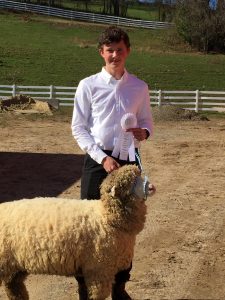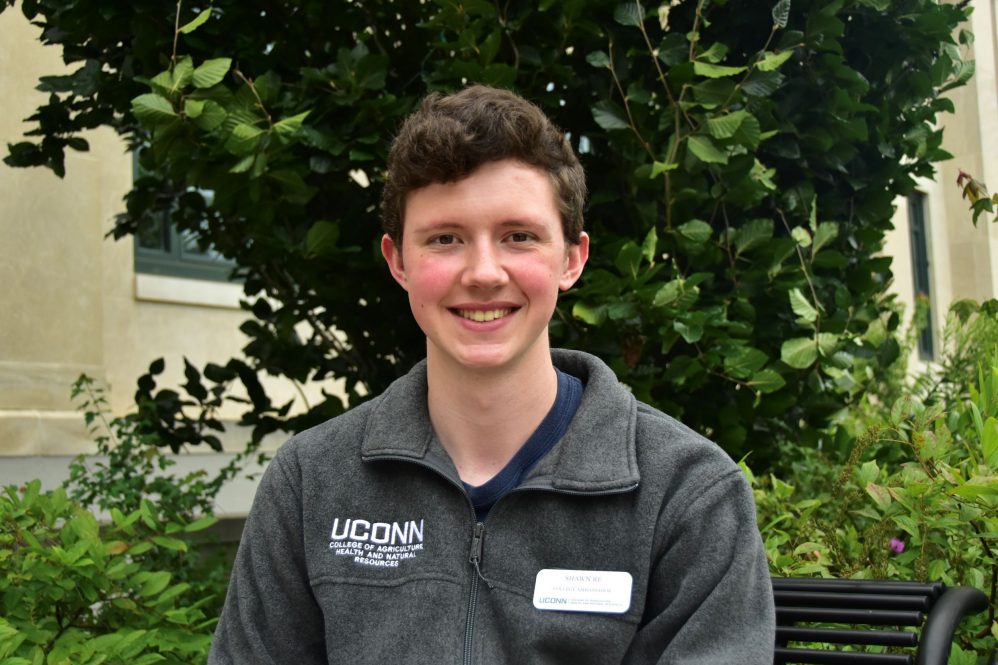Shawn Re ’23 is majoring in animal science within the College of Agriculture, Health, and Natural Resources. He is part of the CAHNR Ambassadors program, a group of highly engaged students who promote and serve the College of Agriculture, Health and Natural Resources (CAHNR). Students in the program receive hands-on leadership experience through recruitment and other activities, like sharing their CAHNR Experience.
Students like me who are dreaming of going to veterinary school or other graduate programs may be deterred by something people wouldn’t expect. For lots of us, it’s not the additional schooling or challenging preliminary classes that scare potential grad students. In reality, it is one seemingly simple aspect of the process before graduate school even begins – the applications. Applying to veterinary school or any other graduate program can be one of the most daunting things a student has to face. This early step could be what makes or breaks a student’s decision to reach for their academic goals and dream career.
Take it from me. As a junior in the Department of Animal Science, I’m beginning to go through the process now. It’s not just filling out forms and taking standardized tests that can spook students either. The rates of acceptance to certain programs can seem so slim that students might not even want to try. To put it into perspective, the average acceptance rate for out-of-state students to veterinary school is 6% compared to a rough average of 32% in undergraduate programs. That percentage then gets compounded by the small number of seats that most veterinary schools offer. That means that many schools only accept around 10-15 out-of-state students each year. If that is not enough to make even the most accomplished student nervous, then I don’t know what would.

Despite this tough road, the better prepared a student is, the higher their chances of achieving their graduate school goals. One of the best ways to be prepared is to find a school that will help you along your path. The College of Agriculture, Health and Natural Resources (CAHNR) does an outstanding job of preparing their students for veterinary school or any other graduate program they may choose. For students focused on pre-vet studies, the programs within the Departments of Animal Science and Pathobiology and Veterinary Sciences can’t be beat.
Hands-on experience is one of the most important elements of a veterinary school application, whether it be in a hospital or livestock setting. At CAHNR, students don’t have to go very far to gain real-world experience that sets them apart on vet school applications. The Department of Animal Science is home to five barns for different species of livestock animals (chickens, sheep, horses, dairy and beef cattle, and swine). All of which are heavily utilized not only by the faculty, but also by the students for learning purposes. A large portion of classes offered include some time spent inside those barns allowing the students to get experiential learning with the livestock. On top of this, there are classes that can offer a more clinical lab setting where students can learn about anatomy, histology, nutrition, endocrinology, and more. In addition to all of this in-class learning, many of the professors who operate research labs welcome undergraduate students into their research projects. Allowing students to experience research first-hand gives them a leg up, but also provides invaluable opportunity to live your potential future career. All these combined aspects supply students with not only a formidable understanding of the material, but also the ability to apply it in real life applications.
Experiential learning opportunities at CAHNR aren’t restricted to campus either. The College works hard to provide students with internships in various fields and locations. They hold annual career fairs which host companies that align with the students’ interests and are seeking students to fill internship or even full-time career positions. This lets students find what they are passionate about and transfer what they have learned in class to real life, demonstrating not only to their employers but also future veterinary schools what they are capable of.
The final and most important way that the College of Agriculture, Health and Natural Resources prepares its students for veterinary school (or any other graduate school) is the faculty itself. I chose UConn not only for its great animal science and academic programs, but also for the atmosphere. I had no way of knowing how supportive my professors would be until I got here. All of the faculty and staff members within the College are dedicated to seeing the students succeed. Advisors will work one-on-one with students to help them map the best path to achieve their goals. Many of those faculty members also have connections with the very graduate programs that students are seeking to get into. Faculty are uniquely positioned to provide students with information and contacts, so they set their sights on the right programs for them.
With all of that, I feel that the programs at the College of Agriculture, Health and Natural Resources have prepared me for the road to vet school, from the application process to my future studies. Through experiential learning, access to research labs, internship opportunities and dedicated faculty who want to see every student succeed. I’ll be spending the rest of my junior year continuing to prepare my applications and crossing my fingers for acceptance letters next spring.
Follow UConn CAHNR on social media



